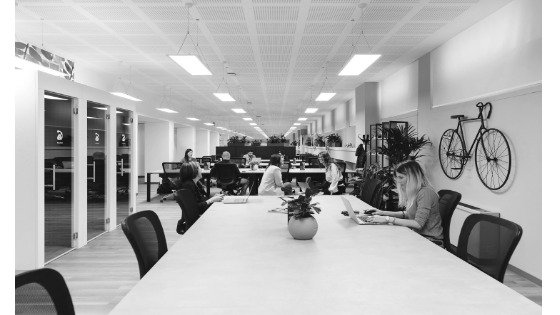Why is Good Lighting in the Workplace Important?
Businesses must provide healthy, safe and secure working environments in accordance with the Workplace (Health, Safety and Welfare) Regulations 1992.
This includes the provision of suitable lighting so that employees can perform their jobs without risk caused by poor visibility. The Management of Health and Safety at Work Regulations 1999 also requires employers to continually assess any risk to employees with steps in place to identify, remove and review potential problems.
Health and safety policies, procedures and training should therefore include good lighting practices.
What Problems are Caused by Poor Lighting?
Poor lighting in the workplace can have a considerable impact on the productivity, performance and attendance of employees.
The most common health problems are migraines, headaches, eye strain, muscular strain (caused by straining to see), and depression (from low light levels).
Sick Building Syndrome is becoming more widespread, particularly in new and refurbished workspaces. The main symptoms are itchy skin, a runny nose, lethargy, irritability and reduced concentration, caused by an inadequate working environment, including poor lighting.
As well as illness, poor lighting can result in dangerous hazards remaining unseen. The more varied the hazards in a workplace, the more specific the lighting regulations need to be to ensure employee safety.
What Does Good Lighting Look Like?
Every workplace has a unique and specific set of hazards that have the potential (or risk) to cause harm to employees. While good lighting requirements may differ from business to business, here are some of the main considerations:
- Effects: glare, colour variation, strobing, flicker, veiling reflections (such as light from a window impairing the visibility on a computer screen), and optical radiation.
- Design: how, where and what kind of lights are fitted both internally and externally.
- Installation: ensuring light fittings are safe and suitable for the space and purpose, along with preparations for future maintenance, replacement and disposal.
- Emergency lighting: coordinating with existing health and safety policies including the location and use of emergency exits, escape routes, alarms and equipment.
Further information is available in the free ‘Lighting at work’ guide by Health and Safety Executive.
What is a Lighting Survey and How Can it Help?
In accordance with the Management of Health and Safety at Work Regulations 1999, businesses should complete a risk assessment on workplace lighting provision.
However, recognising problems and making changes can be challenging, especially when there is a variety of workspaces and roles.
A lighting survey can accurately assess the suitability of the existing lighting for the jobs performed in each individual workspace.
We’re here to help
At Workplace Exposure, we want to help you provide and maintain a safe working environment for your employees.
Our expert team has experience working with a wide variety of different businesses to ensure they offer a safe, compliant working environment.
Our professional solutions and advice help to ensure your business meets compliance standards and is operating to best practice.
Our approach
Get in touch with Workplace Exposure. Either give us a call on 0800 689 4386, or fill in our enquiry form to discuss your monitoring or consultancy requirements.
We’ll then provide you with a no-obligation proposal, we can often give an initial idea of fees whilst we discuss your needs.
Once you’ve accepted our proposal we can then schedule the work.
Following our site visit we’ll provide you with a comprehensive report giving you advice, recommendations and control measures where appropriate. Implement the outcomes for compliance and a happier healthier workplace.
